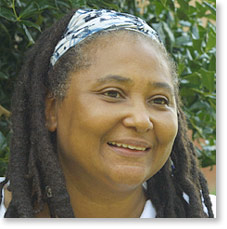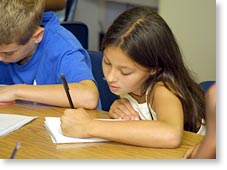|
Building Artistic Communities
Thank you for inviting me to assist you in opening your 65th annual conference. Thank you for choosing the South. I have to make a confession. Contrary to general belief, I am not from Atlanta. For me, moving my family to Atlanta in 1976 was a calling. I had to witness for myself the South my parents escaped. Imagine my surprise when Atlanta and the South grounded me in art, culture, history, and spirit and became my home. Then Atlanta became my community of choice. The communities that welcomed us to Atlanta were various and diverse. So, now I want to welcome you South. Welcome home. Welcome. Actually, I was born and reared in St. Louis. My parents came to live in St. Louis by way of Ripley, Tennessee and Pine Bluff, Arkansas. My childhood was an unorthodox blend of European, Southern Black, Native, and Ozark cultures. My favorite memories are of great art and grand architecture come to me through those cultures. My childhood hangouts included Forest Park for cookouts, then on to the zoo, the botanical gardens, the Jefferson Memorial, and the Art Museum. But, the Vashon Community Recreation Center was my main hangout, more than a second home. The Vashon Community Recreation Center sat on two square city blocks directly across the street from my house. It sat on Market Street, a great man made highway of traffic and commerce. You could walk out my front door, into the doors of the Vashon Community Center. For me, crossing that one street was like a journey to a New World. At the Vashon Community Recreation Center Miss Helen, Mr. Bailey, and Mr. Westbrook taught me how to crochet, weave a rug, and sew by hand. I learned how to swim, to build a lamp, and to tumble. I was encouraged to join the drill team, the rifle club, and take boxing lessons. They provided acting classes and the opportunity to perform in productions that toured other community recreation centers. Over the years, I studied jazz, soft-shoe tap, ballroom dancing, and ballet. My dance ambitions died after my first class on point -- in those incredible shoes with steel in the toes. Thereafter, I concentrated on square dance competitions and the drama club. All this was mine. Everyday after school and all day during the summer. They never mentioned money. All that was required was my time and attention. All of you have these memories. That is why you are here today. The arts played an early role, a friendly character in your life. You grew to believe there was something democratic about the arts. Something about the ability to change, and the power to say, think, and to be. You are here today because you are possessed by art. Our youthful experiences led us to believe all children did art. We fashioned in our mind a vision of "the artist" as people who were supportive and kind, creative and enlightened. People who wanted to pass something on to the next generations. Now we have arrived in this place, for this gathering. Art has brought us here. The theme for this year's conference is "Building Artistic Communities." BUILDING -- not just the National Guild of Community Schools of the Arts, but that elusive harmonious community of art that we envisioned in our naive youth. Today we are here to talk about the work necessary to construct such a community. For we are all examples of what community based arts programs are capable of inspiring one to become. We not only make art; we write proposals, evaluations, and final reports essays and commentary, poems, plays, and short stories. We teach poetry class, expressive movement, and photography. We work for and with children, families, the elders, the disabled, the sad, and the jubilant. I look around this room and I am reminded of a poem by The Chilean poet, Pablo Neruda titled “La Sebastiana.” (1) I apologize in advance for the few liberties I will take with Neruda's poem. He begins with the line "I built the house" -- today I would like to begin "We built the house."
For me, this poem is all of us accompanied by all those we bring with us and all the houses of art we left to gather here. Today, we are a community attempting to create itself out of air, with meager materials and little money. However, our vision is large enough to make our dream our reality. The communities many of use serve are like Neruda's doors --- doors which have been tossed out, with no trace of a key and what we bring is that fist to knock on them. Kate Hammer describes us as "Artists of great depth and commitment, professionals with training, experience and vision" yet we are invisible to many of our colleagues and possible patrons because our mission takes us away from the mainstream. (2) We are individuals and partnerships, collectives and collaborations, academies, schools and centers of the arts. We are one yet we are many. We may never get the Sunday cover of the Arts Section with color pictures above the fold. Look for us beneath the folds. Yet, what we do with, for, and in communities across this nation is important because "Art is the community's medicine for the worst disease of mind, the corruption of consciousness." (3) What does it take to Build Artistic Communities? We must become activists in our own interest. We must act with purpose and certainty in the best interest of our collective communities. We must protect our house. Do not allow those who do not care about our health, our survival, our profession to set our agenda then consume our passion and time. Our powers lie in our diversity and our numbers. Think about how we can support each other. Think about new models-new ways to make and deliver Art. The foundation of our community is our collective history. The history of human art and architecture begins as early as 28,000 years ago. The earliest examples of art are images of animals painted in caves or cut into rock walls. This art depicts our collective ritual activities: preparation of food, extracting medicines, and herding. Later we began to create clay heads and human figures. Today, very little of our earliest art survives because we used it in our ceremonies and in daily life. In our collective history, art is an adjective -- not a noun. I have a dream. I call it the Lovelace Theory of "atomic art." In this dream, we are inspired by how rich and diverse our communities are. We are motivated by how inspiring it is to work together and assist each other in reaching our goals. We are energized by the role we play in building community working on an individual level making connections and contributions to the civic life of our nation. We are building artistic communities that extend beyond geographic, ethnic or class boundaries to include all artists and all arts organizations. Spreading across the land like a giant mushroom cloud --- but instead of destruction --- we bring enlightenment. Pete Seeger said it best, "The artist in ancient times inspired, entertained, and educated his fellow citizens. Modern artists have an additional responsibility -- to encourage others to be artists. Why? Because technology is going to destroy the human soul unless we realize that each of us must in some way be a creator as well as a spectator or consumer. Make your own music, write your own books," Pete Seeger warns, "if you would keep your soul." I stand before you--members, friends, and associates of the National Guild of Community Schools of the Arts -- to issue this call to community. Let us raise a flag into the air and let it drape from the stars, from the clear light of our unity. A community flag festooned with your three prone action plan: Advocacy, Partnership, and Sustainability. Advocacy We make our case by writing letters to the editor; local, state, and national politicians--letting them know what's going on. We make our case by attending school board meetings and city council meetings to let them know that community schools of the arts; the artist who sustain them; the participants that give them a reason for existing; the administrators, funders and supporters that make them possible are vital contributors to our national community everyday. Partnership Sustainability Human Capacity The National Guild is one of those invaluable nests. A resource supports our efforts to connect offering programs and informal guidance to all that seek assistance. The Guild supports community arts and arts education efforts through the NASCENT program. The NASCENT program helps to promote excellence. From seed grants, to training, to the Adopt-a-School program nourishing emerging schools and centers and fostering artistic and administrative excellence. What must we do to build our thriving artistic communities? In Atlanta, the United Way recently announced they would pilot a youth internship in the arts program. High school students will be paid to spend their summers working with arts groups. We are being offered the opportunity to mentor young artists, designers, and program administrators. Find out what is happening in your community to introduce young people to not only the making of art, but also the administration and curating of the arts. Physical Capacity Financial Sustainability One of the enduring images of my childhood are the Friday afternoon collection of dimes from students in my third grade class for the Red Cross. We need to build our support from the base and if we have to, raise our money a nickel, a dime, and a quarter at a time. Spiritual Sustainability One of my sixth grade students expressed this calling---to help the people to see that we are all called to art. Janita Rainey is a 6th grade student at McCracken Middle School in Hilton Head, SC. She wrote this poem January 26, 1995. I AM AN ARTIST
We will make a change by promoting our belief that art teaches us the desire to pursue knowledge. That the arts are essential to expressing our humanity. That the arts offer us a lens through which to learn about our community, our world and ourselves. That the arts give vision and voice to our challenges and triumphs, our fears and aspirations. That art fosters creativity and brings with it the innovators of the next generation. Let us learn from others. In the words of Marian Wright Edelman, "We must not, in trying to think about how we can make a big difference, ignore the small daily differences we can make which over time, add up to big difference that we often cannot foresee." This is a call to my creative community. This is a call to stir up the melting pot, the callaloo pot, and the gumbo so that the rue can rise to the top. For it is in the rue that the rich flavors live; the nutrients which can and will bring about qualitative and quantitative change -- social change for artists, artists' organizations and the rest of our nation. We are the creative community. We want to know-it-all -- everything from ancient history to eighteenth century philosophy, ancient tea ceremonies and the stock market. We need to know because the creative person knows that one day three or four of these ideas will come together to form a new idea. It may be ten minutes later or three years down the way. We have a faith that it will all come together. In need to share with you the words of eighteen artists from various mediums who gathered in a cabin in Jackson, Mississippi in 1995 to talk about building a movement of community based arts in Mississippi. They would say, we are gathered here today to talk about how we can Pass It On. Pass It On (4)
This is what we are called to do. We must do all these things and we must do them in the sprit of Harambee, which in Swahili means, "let's all pull together." Therefore, when I say Harambee I want you to join me in making a strong downward pulling motion. We will do this three times. Okay? Are you ready?
Thank you for allowing me to salute you!! |
|||||||||||
If you have any thoughts on this or would like to contribute to an ongoing discussion in the  What is New? || Affirmative Action || Art Changes || Autonomy: Chiapas - California || Community Images || Education Rights || E-mail, Opinions and Discussion || En español || Essays from Ireland || Global Eyes || Healthcare || Human Rights/Civil Rights || Piri Thomas || Photo of the Week || QA: Interviews || Region || Rural America || Search || Donate || To be notified of new articles || Survey || In Motion Magazine's Store || In Motion Magazine Staff || In Unity Book of Photos || Links Around The World || OneWorld / US || NPC Productions Copyright © 1995-2014 NPC Productions as a compilation. All Rights Reserved. |






